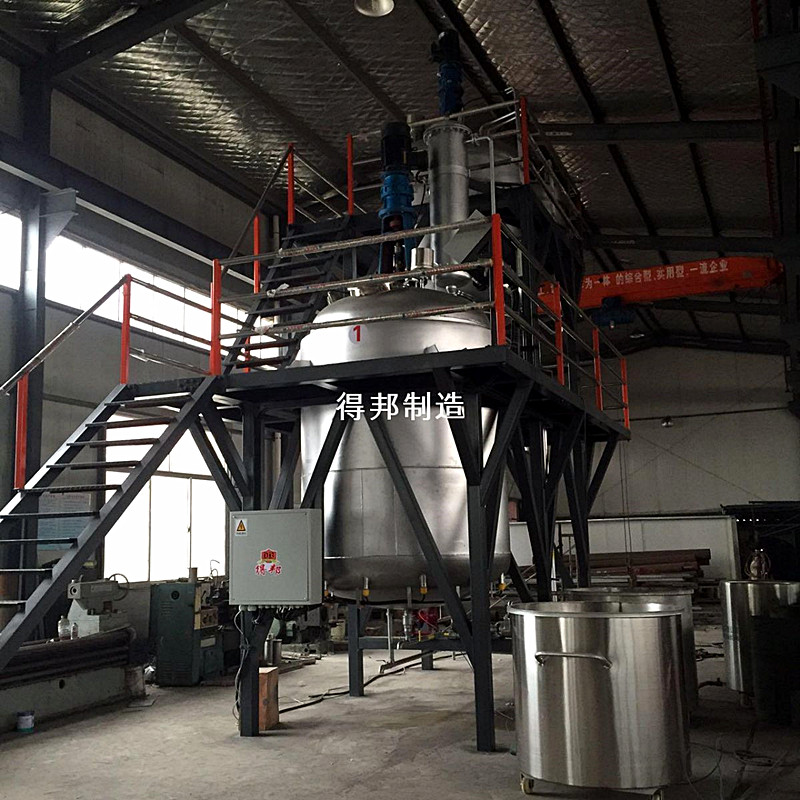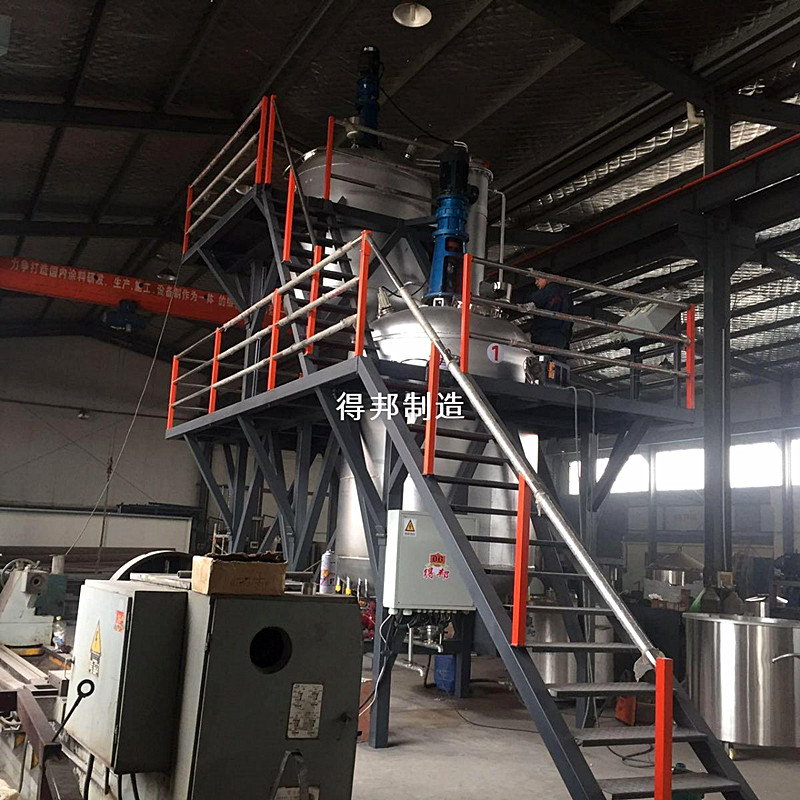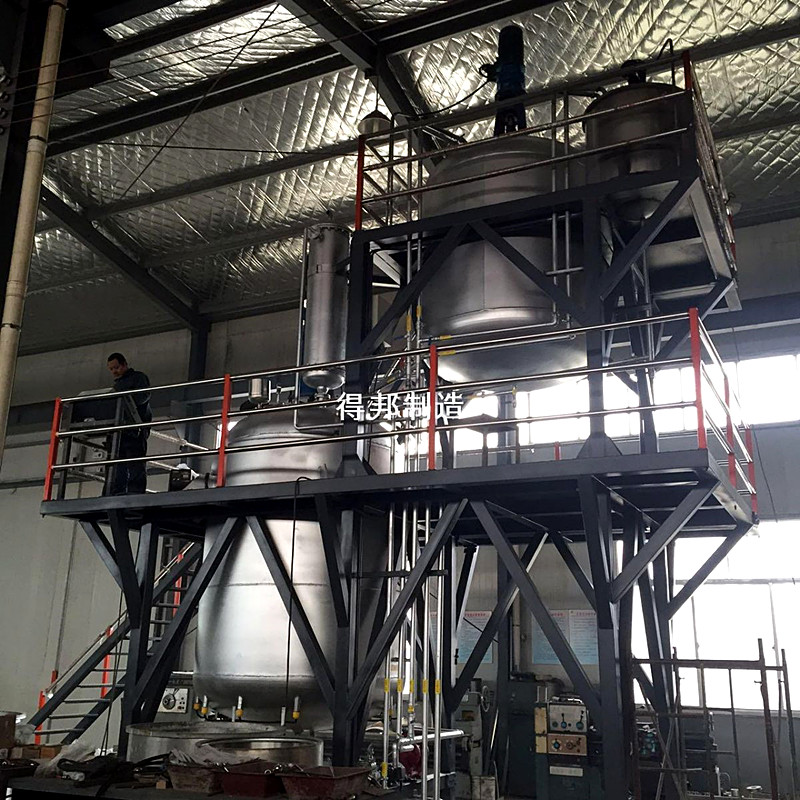The general understanding of the reactor is a stainless steel container with physical or chemical reaction. Through the structural design and parameter configuration of the container, the heating, evaporation, cooling and low-speed mixing function required by the process are realized. The pressure requirements in the reaction process are also different for the design of the container. Production must be processed, tested and commissioned in strict accordance with the corresponding standards. The stainless steel reactor can be different according to different production processes and operating conditions. The design structure and parameters of the reactor are different, that is, the structure of the reactor is different, and it belongs to non-standard container equipment.
1. Product introduction
The general understanding of the reactor is a stainless steel container with physical or chemical reaction. Through the structural design and parameter configuration of the container, the heating, evaporation, cooling and low-speed mixing function required by the process are realized. The pressure requirements in the reaction process are also different for the design of the container. Production must be processed, tested and commissioned in strict accordance with the corresponding standards. The stainless steel reactor can be different according to different production processes and operating conditions. The design structure and parameters of the reactor are different, that is, the structure of the reactor is different, and it belongs to non-standard container equipment.
The reaction vessel is a comprehensive reaction vessel, and the structure of the reactor structure and the configuration of the accessories are designed according to the reaction conditions. From the beginning of the feed-reaction-discharge, the pre-set reaction steps can be completed with a high degree of automation, temperature, pressure, mechanical control (stirring, blasting, etc.), reactants/products during the reaction. Strict regulation of important parameters such as concentration.
The material of the reactor is generally carbon steel, stainless steel and the like. The reaction vessel can be made of stainless steel such as stainless steel 304 or 316. The agitator has anchor type, frame type, paddle type, turbine type, scraper type, combined type, and the rotating mechanism can adopt cycloidal pin wheel reducer, stepless speed reducer or frequency conversion speed regulation, etc., which can meet the special characteristics of various materials. Reaction requirements. The sealing device can adopt a sealing structure such as a mechanical seal or a packing seal. The heating and cooling can adopt the structure of jacket, half pipe, coil, Miller plate, etc. The heating method includes steam, electric heating and heat conduction oil to meet the different working environments of acid resistance, high temperature resistance, wear resistance and corrosion resistance. need. It can be designed and manufactured according to the user's process requirements.
Classification and structure
The reaction kettle is composed of a kettle body, a kettle lid, a jacket, a stirrer, a transmission device, a shaft sealing device, a support, and the like. The stirring form generally has anchor type, paddle type, turbine type, push type or frame type, etc. When the high diameter is relatively large, the stirring device can be used with multiple layers of stirring blades, and can also be arbitrarily selected according to the requirements of the user. A jacket is arranged outside the wall of the kettle, or a heat exchange surface is arranged in the vessel, and heat exchange can also be performed through the outer circulation. Heating methods include electric heating, hot water heating, heat transfer oil circulation heating, far infrared heating, and outer (inner) coil heating. The cooling method is jacket cooling and coil cooling in the kettle, and the form of the stirring blade. The support seat has a support type or an ear mount or the like. Gear speed reducer should be used when the speed exceeds 160 rpm. The number, specifications or other requirements of the opening can be designed and manufactured according to user requirements.
Applications
Stainless steel reactors are widely used in the production of petroleum, chemical, rubber, pesticides, dyes, pharmaceuticals, food and other production users and various scientific research projects to complete hydrolysis, neutralization, crystallization, distillation, evaporation, storage, hydrogenation, A container for processes such as hydrocarbonization, polymerization, condensation, heat mixing, and constant temperature reaction.
|
Nominal capacity
L
|
Electric
heating power
|
Inner pot diameter
φmm
|
Jacket diameter
φmm
|
Reducer type
|
Electric motor
n/KW
|
Mixing speed
|
|
50
|
4x2kw
|
400
|
600
|
BLD
0.8-1
|
1450/0.8
|
36-60-100
|
|
100
|
6x2kw
|
500
|
700
|
BLD
1.1-1
|
1450/1.1
|
36-60-100
|
|
300
|
6x4kw
|
800
|
1000
|
BLD
2.2-2
|
1450/2.2
|
36-60-100
|
|
500
|
9x4kw
|
900
|
1100
|
BLD3-2
|
1450/3
|
60-100
|
|
1000
|
12x4kw
|
1200
|
1400
|
BLD4-3
|
1450/4
|
60-100
|
|
2000
|
15x5kw
|
1400
|
1600
|
BLD4-3
|
1450/4
|
60-100
|
|
3000
|
15x6kw
|
1600
|
1800
|
BLD5.5-3
|
1450/5.5
|
60-100
|
No article.






